Connor Sherlock makes walking simulators, and they are definitely simulations that you walk through. Unlike, say, Gone Home or What Remains of Edith Finch, his works aren't visual novels or graphic adventures that borrow the controls and interface of first-person shooters. He's gone a step further, and stripped away traditional elements like narration and explicitly goal-oriented level design. Instead, Connor Sherlock's games are essentially plotless landscapes for pure exploration, with the only reward being the chance to appreciate the architecture of the space. They're less videogames and more video sculptures.
Whatever you want to call his work, the musician/game dev creator of The Rapture Is Here And You Will Be Forcibly Removed From Your Home has spent the last two years releasing one walking simulator a month on Patreon, and recently released the first volume of his Walking Simulator a Month Club, collecting more than a dozen of his games from late 2015 to the end of 2017.
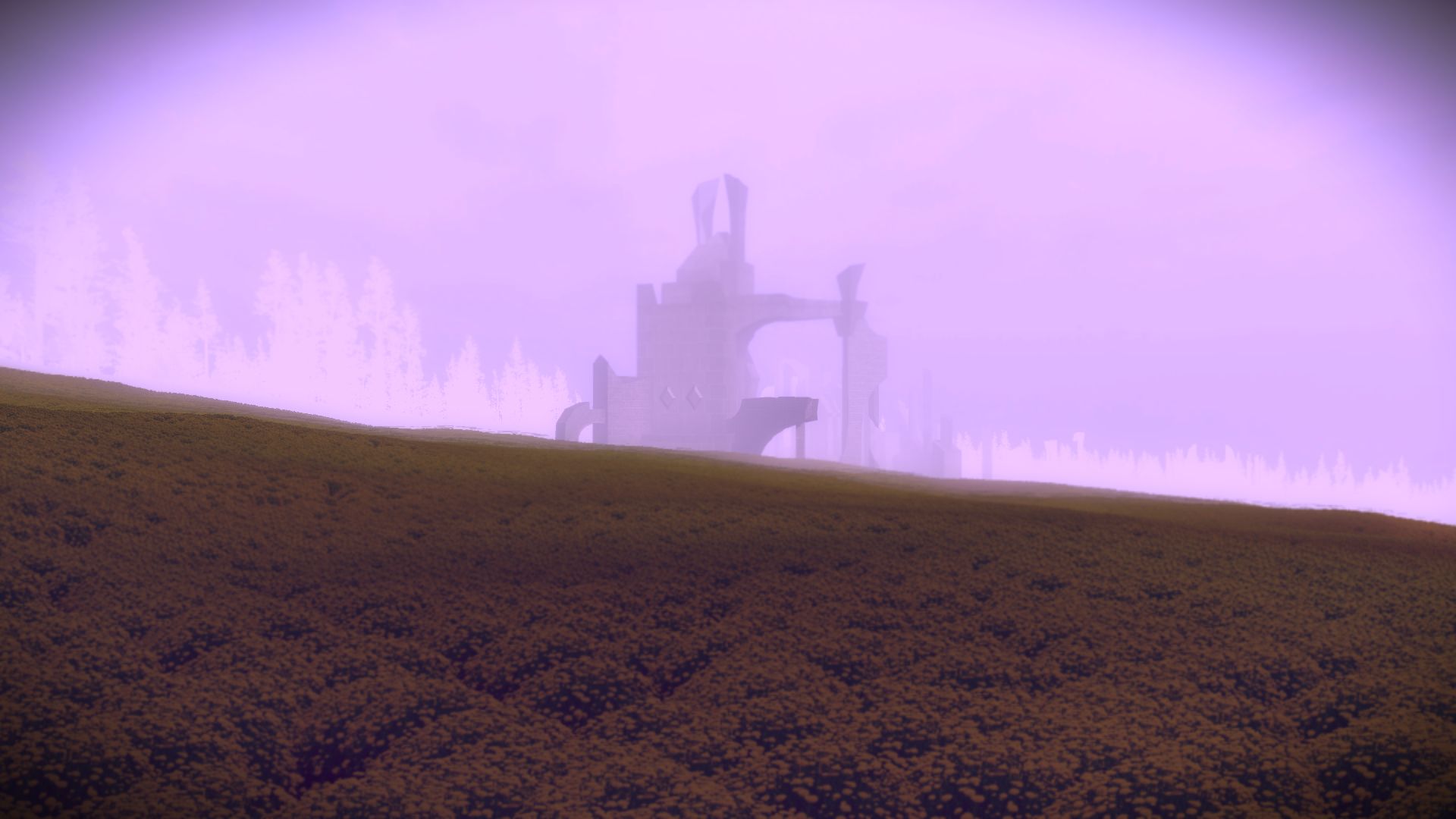
My own personal favorite moment was in As the Fog Burns, when I unexpectedly burst out of trackless forested hills into an unexpected clearing full of dandelions, just as the previously low-key synth soundtrack ramped up—but I'm not sure I could tell you how to get to that clearing a second time. Some of the other highlights include Krypton Comet, an icy wasteland floating through an asteroid field somewhere in deep space, or Simulation Failure, a glitched-out valley framed by unreachable towering pinnacles on either side, where the sunlight burns through the smog as falling motes trail streaks of light like pillars behind them.
I had a chance to speak with Sherlock about what makes a videogame a videogame, how he creates his own work, and what is next for his Walking Simulator a Month Club.
Questions and answers have been edited for brevity and clarity.
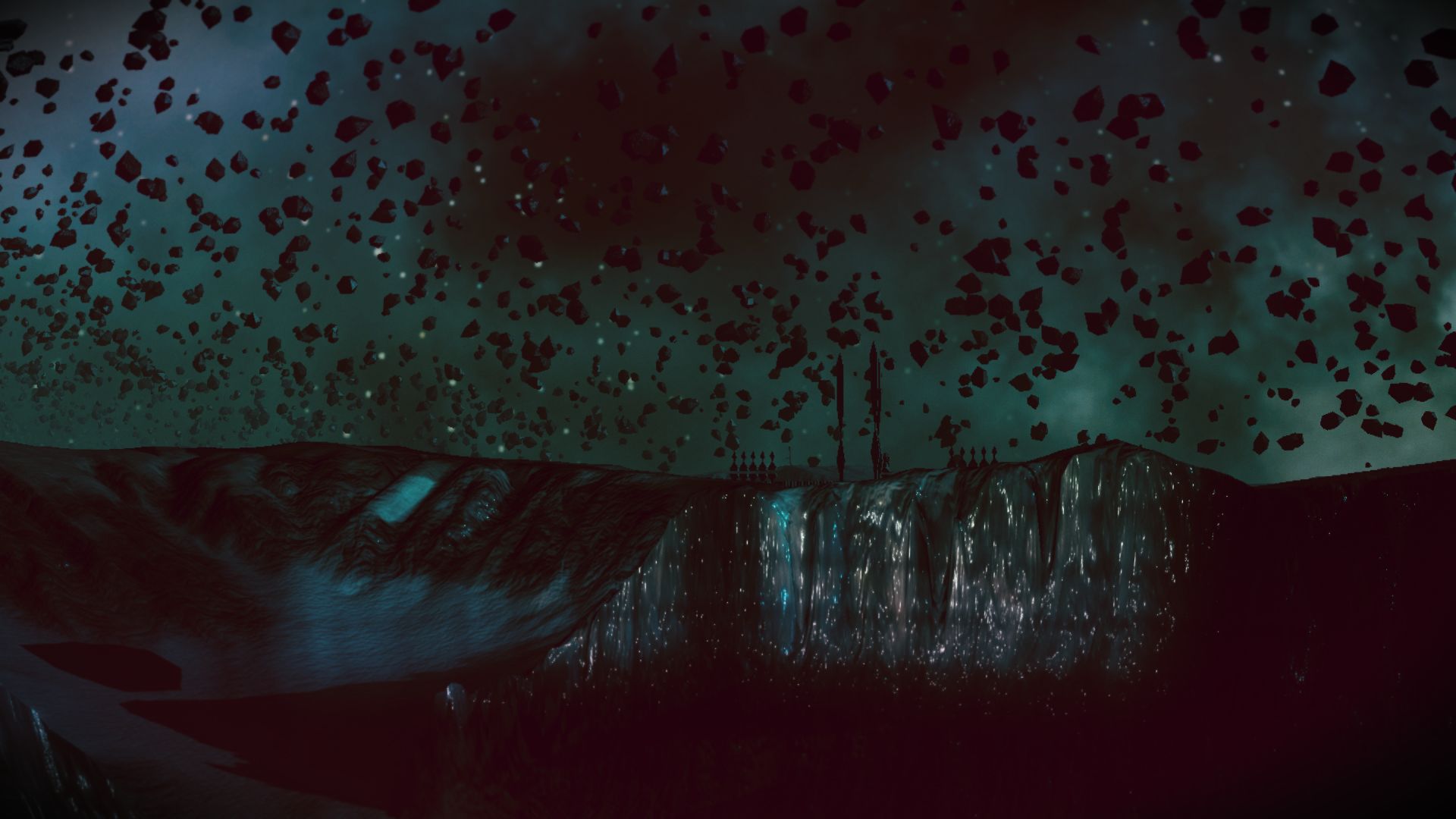
PC Gamer: Why do you call them walking simulators?
Connor Sherlock: I started making games while Dear Esther and Proteus were coming out, and the term walking simulator was being reclaimed as a genre title, much to the chagrin of the aforementioned creators. I always thought the term was fun and playful, and so when I starting up my game-a-month Patreon I thought it was a neat-sounding elevator pitch. The term is also pretty value-laden, so it does a good job of screening out people who'd have buyers' remorse paying for games with nothing interactive in them.
Keep up to date with the most important stories and the best deals, as picked by the PC Gamer team.
I like that the resulting randomness mimics actual wildernesses in that they aren't made to accommodate you.
Connor Sherlock
I'm very unfussed about what is or isn't a videogame. I err on calling anything that wants to be a videogame a videogame because it means more people will be open to playing it. Tetris is a videogame and Icefishing V is a videogame, who cares! If I called my stuff "explorable landscape paintings" or "digital art" it wouldn't change anything about the thing itself, just the accessibility/attractiveness of it.
What led to making games that focus on landscape to the exclusion of everything else?
For [me], videogames tend to be other places to visit, more than puzzles or games. I grew up playing Morrowind, Mechwarrior 2, and Operation Flashpoint, and spent ages wandering around barren landscapes. Games tend to grow outwards more than they grow in detail. If you have more texture memory or hard drive space or development time, it's harder to resist the urge to make something bigger than more detailed. I (obviously) can't help myself!

Dialogue has fallen out of my games mostly because I don't like writing. I've always had trouble letting my stuff stand on its own as completely narrative-less. "The Rapture Is Here..." only used Lovecraft as a crutch, and CONDOR used Neil Young song lyrics as a plot. I wrote the script to Voice of Vamana myself and hated every second of it! The more I make stuff the more I've enjoyed leaning entirely on sounds and spaces. The narrative stuff I'm doing nowadays is always in collaboration with actual writers, which is sitting well with me.
Can you tell me about your process of developing each monthly game?
I usually start with a very basic world and play around with colour palettes, lighting, and basic shapes for structures. Once I have a basic mood or theme worked out, I go to work building out the terrain.
The landscapes in my games are usually semi-procedurally generated—my input on them is tweaking knobs and dials. Most of the landscapes in Volume One are made in a program called World Machine, which simulates erosion and weathering on layered Perlin noise (altered sine waves woven like cloth, essentially). After baking those, I bring in the heightmap into Unity to further sculpt and then texture and populate it with rocks or trees or whatever it needs. I like that the resulting randomness mimics actual wildernesses in that they aren't made to accommodate you. The landscape not being handcrafted for the player makes it feel more real.
Once I'm happy with that I start building any structures I feel the game wants, and figuring out what I think the player will want to do or should be doing in the space, and build outwards according to that. The architecture is much more directly authored, and is built taking into account whatever landscape I've come up with. By the time I've built something, I have an idea in my head of what the building is for or about or represents.

Since there aren't any people in my games, the structures are as close as you get, and I've anthropomorphized them by the time I get to the music, so whatever mood the architecture gets me in tends to cross over to the music.
I figured I'd make a tiny island of a game each month to the dozen people who cared to pay for it, and be happy with them paying my phone bill or something. Instead the games got larger and more technically challenging.
Connor Sherlock
Since I've usually been hiking around the half-built space for a long time by the time I'm working on the music, I have a good idea for the feel I want, and I start choosing instruments and settings. Most of my music is made using [Virtual Studio Technology] emulations of a Yamaha CS-80 and a Minimoog. Once I have a set of instruments and basic soundscape I like, I hit record and start improvising until I have something I like, which I go back and layer over, essentially jamming with myself. I usually give myself a full day or two for this, and if I have time I'll go back and putz with it to tighten it up. Sometimes I get something I like right away, sometimes it takes a full week or two before I've found what I'm looking for.
While some of the areas do use atmospheric sounds instead of or after the music ends, usually the music is pretty front and center, and has to evoke the physicality of the environment as well as the mood. Often this means airy synths with a lot of reverb, but In "6.2 - Subterranian", most of it is spent underground, so I used a thick heavy saw-toothed synth noise to crank up the claustrophobic nature of the area that begins once you start your delve. If you delve far enough, you break through to huge cave/vault with church-like structures instead of stalagmites and stalactites. [For this area,] I used a setting that sounded like a church organ, but used a pitch bend (something church organs don't have) to get across the vastness and strangeness of the space, which kicks in on top of the low, buzzing drone.
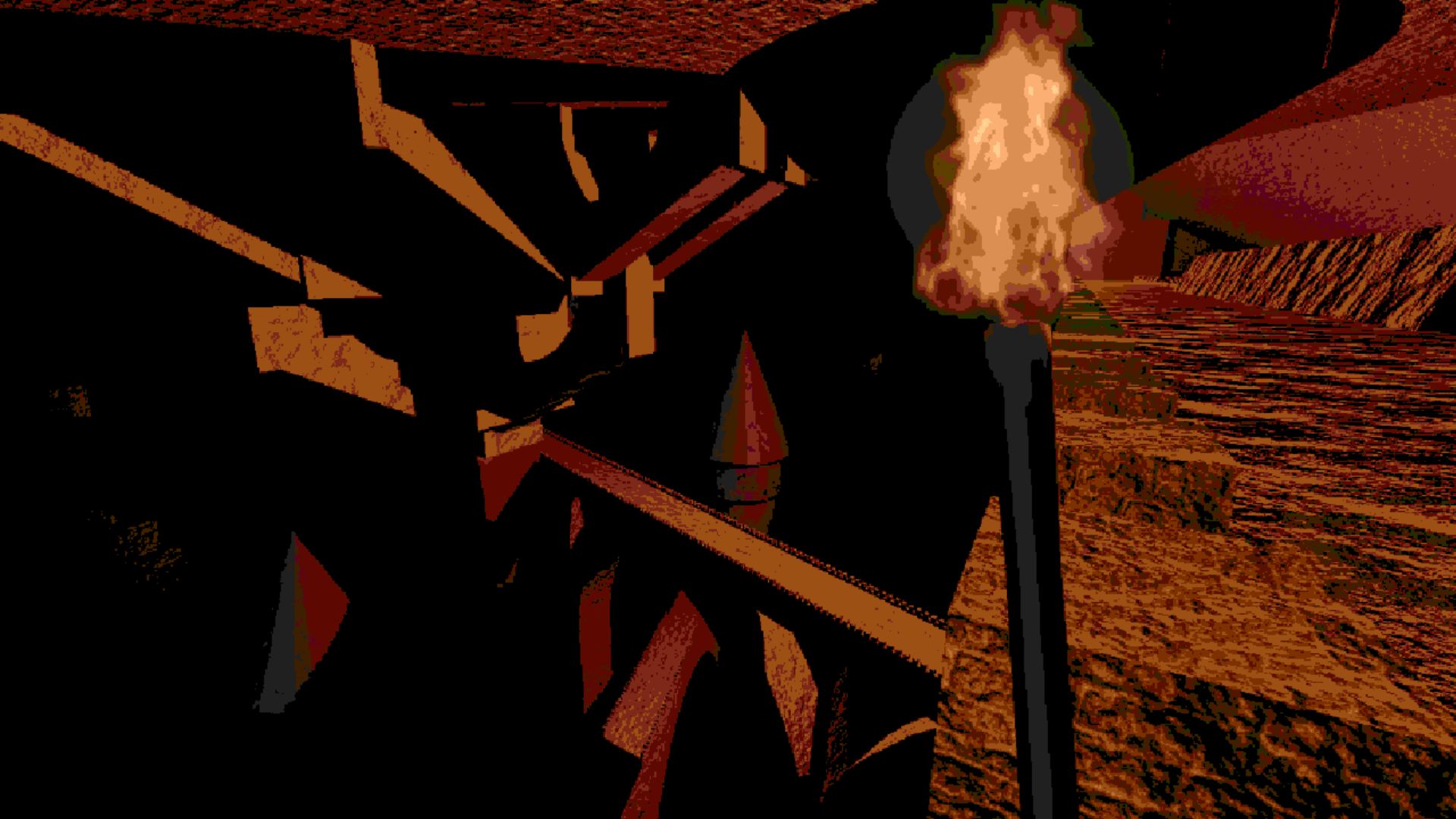
Because I'm making one a month, everything is very by-the-seat-of-my-pants. While it creates a lot of good and I enjoy the improvisation aspect of the project, it also means there's a lot of rough edges and half-baked ideas. However, I feel this way about everything I release, not just my monthly games. I try and remind myself that not everybody has spent dozens of hours in each place, and there's at least 10 minutes of enjoyment to be had in each one. If a few of them hook you and you're in for an hour or two, then it's a good value proposition. Since some of my walking sims are 900 kilometers square [in-game], there's definitely room to lose yourself if you want to.
Each game has a readme file with a short piece of fiction to frame the game, about a society simulating the past in the waning days before the heat death of the universe. When do those get written when you're making a game?
They're made up on the fly as I post the game to Patreon, building out the weird narrative I have going on. The joke is that I'm pretty sure the "cyclical big bang" that these pod people are waiting for has been scientifically disproven, and will never happen.
I've always been drawn to the sickly sweet comedy of Hitchhiker's Guide to the Galaxy, Brazil, Catch-22, maybe some of Doctor Who, et cetera. The profound sadness and pessimism is heightened by a slightly manic need to be uplifting, and I wanted to tap into that.
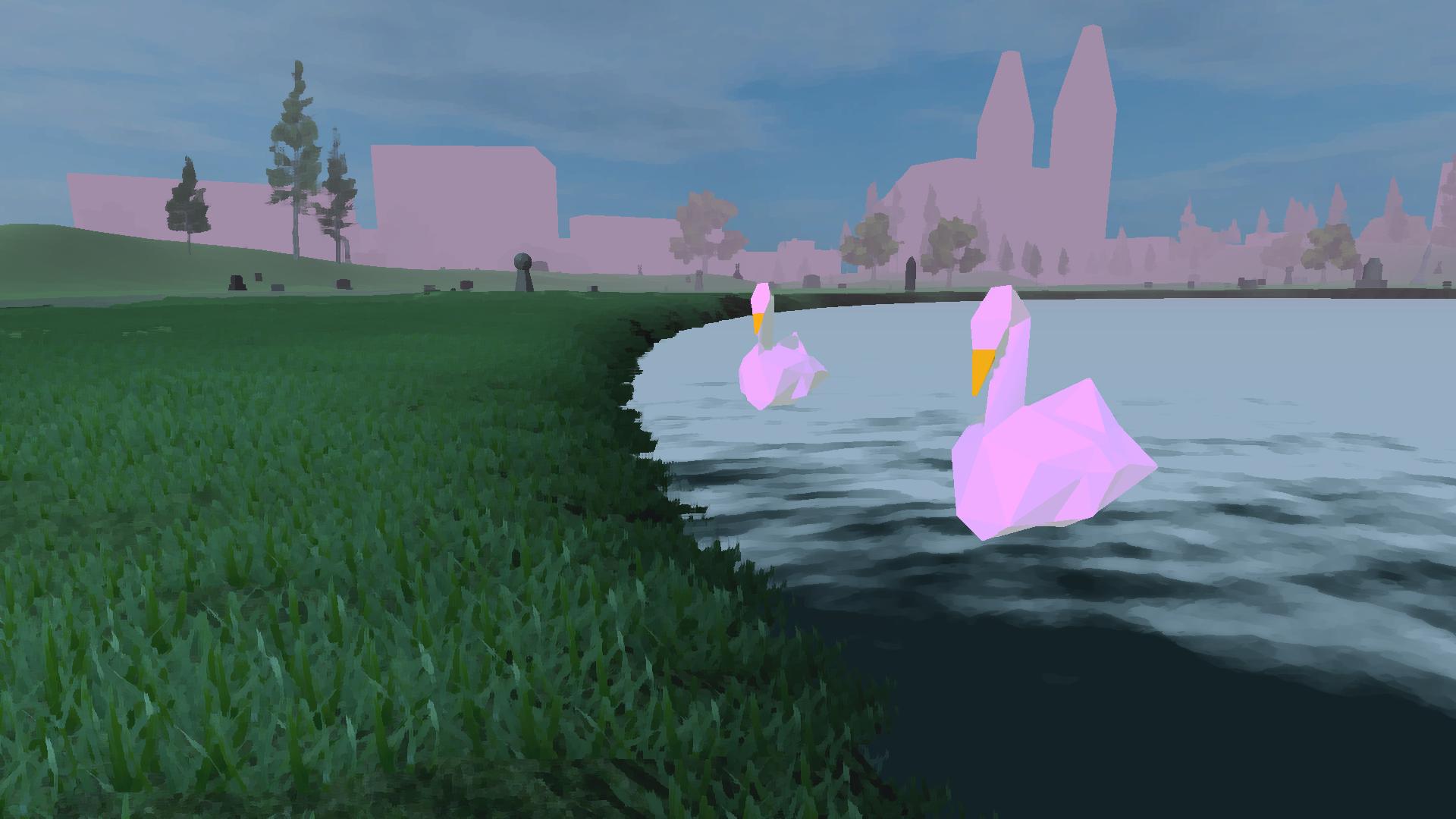
How did you end up making a new walking simulator a month, every month?
After a few stalled projects, I gave up on making a Steam-oriented game, and launched the Patreon to scale down—I was worried I'd otherwise stop making games entirely. I figured I'd make a tiny island of a game each month to the dozen people who cared to pay for it, and be happy with them paying my phone bill or something. Instead the games got larger and more technically challenging. Suddenly I was working harder and better than I ever had been, and making way more money than I had been previously on itch.io (almost a part-time job!).
...having a truly infinite world to work with is going to be fun.
Connor Sherlock
While having to deliver to patrons poses its own stresses, not releasing the games publicly gave me the freedom to embrace the improvisational, abstract moodscapes that I otherwise would have been too self-conscious about to build. I would have worried more about player goals or mechanics as metaphor or how well they'd play on YouTube or be written about or a million other things that would have changed them into something more traditional.
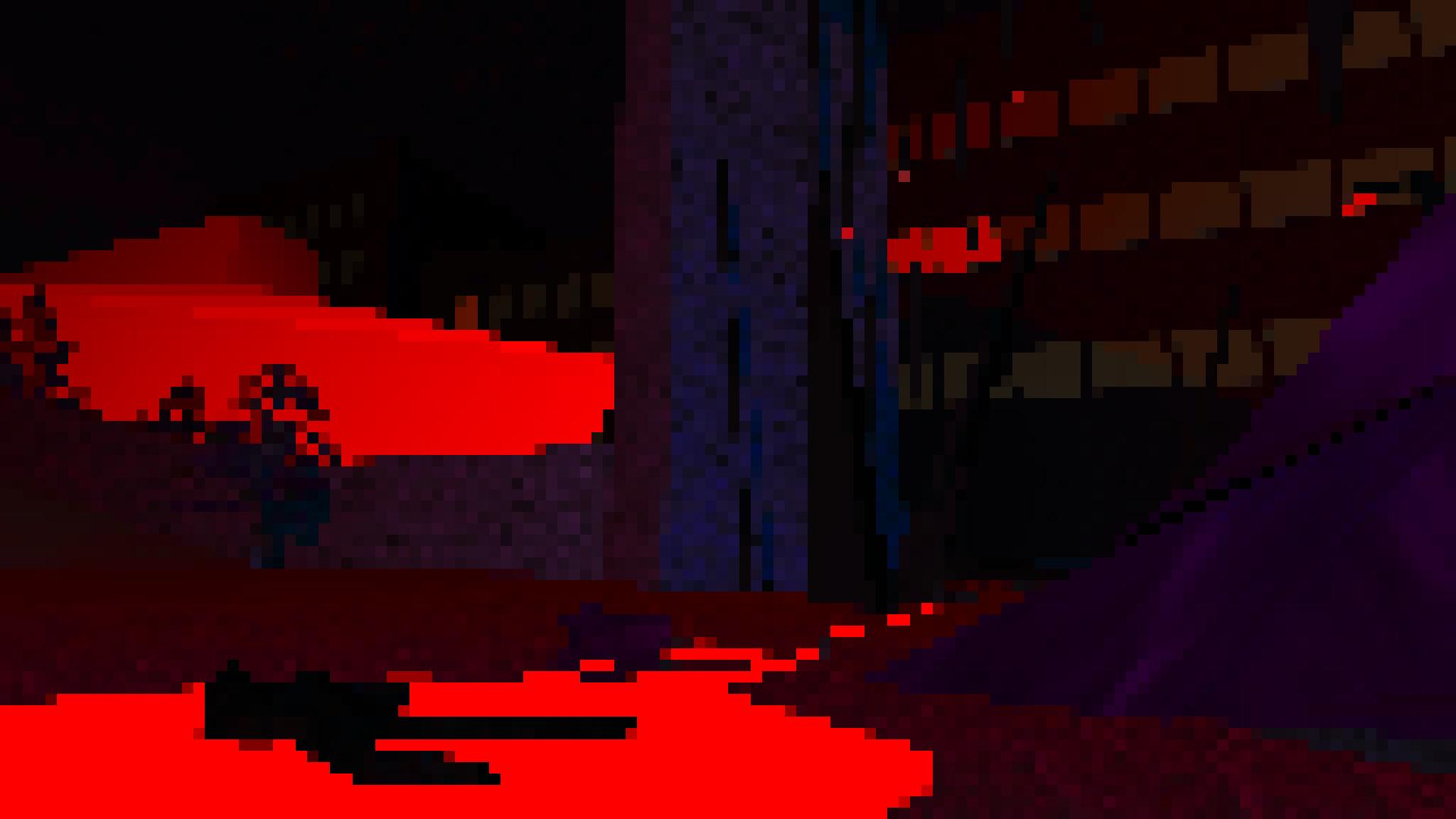
I know you're still running your monthly Patreon; is this going to be a yearly thing? Is there going to be a Walking Simulator of the Month Club Volume Two?
That's the plan. Not everybody is comfortable with the monthly subscription model, so I'll probably release packs or single games as I gather enough of them. Volume Two is tentatively named "The Witch of Agnesi" and Volume Three will be "Further Future Tourism". I'd like future packs to be a single executable file instead of one per game, but I don't know if it'll work out like that.
How will Volume Two be different?
All but the last game in Volume One has an edge of the world in there somewhere. I had been wanting to do infinite terrain for a while, but didn't have either the know-how or the setup for it. I was eventually recommended MapMagic, a Unity extension. [With MapMagic], I can dynamically place grass and textures [in-engine], which also saves hours of painting manually. It's still Perlin noise and erosion modelling, but done on runtime. It can also place trees and structures and rocks dynamically, so I'm starting to experiment with designing structure complexes, which can then appear way outside whatever space I design for the initial arrival. It took me hours to bake a heightmap in World Machine, and I'd rarely get what I was looking for on the first try.
My internal cut-off point was whenever I got my infinite terrain setup working, and retired my (now old and barely functional) laptop. I made a last-minute addition by making a game to match the cover art (by Elizabeth Simins), which is why it's the only infinitely generating one [in Volume One].
Volume Two is going to be able to focus on much more intricate architecture (interiors!) now that my terrain workflow has been streamlined. Even though I'm using a new program, they techniques and principles are still the same, so my two years' experience making mountains transfers over easily. While I enjoyed having an edge of the world to work with, having a truly infinite world to work with is going to be fun.

